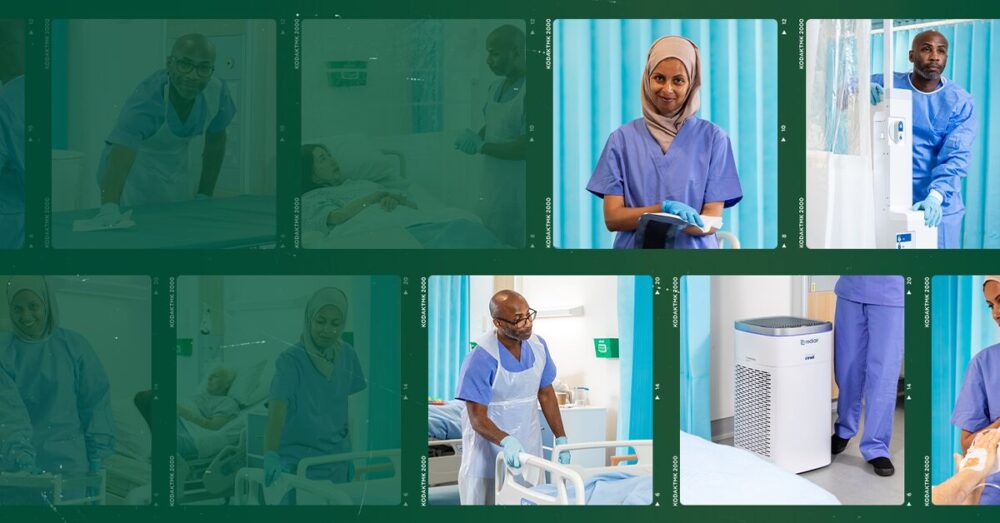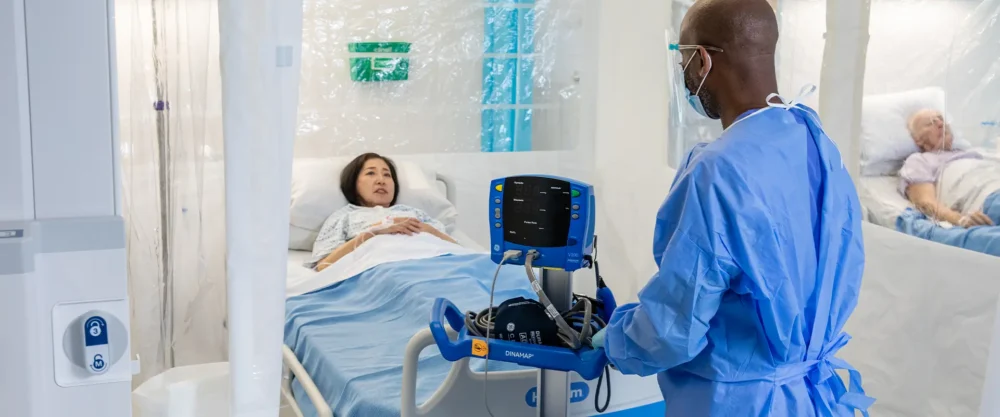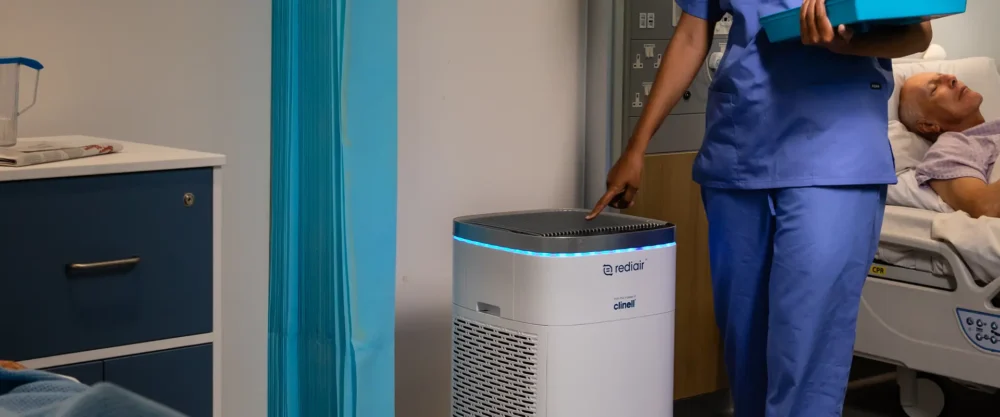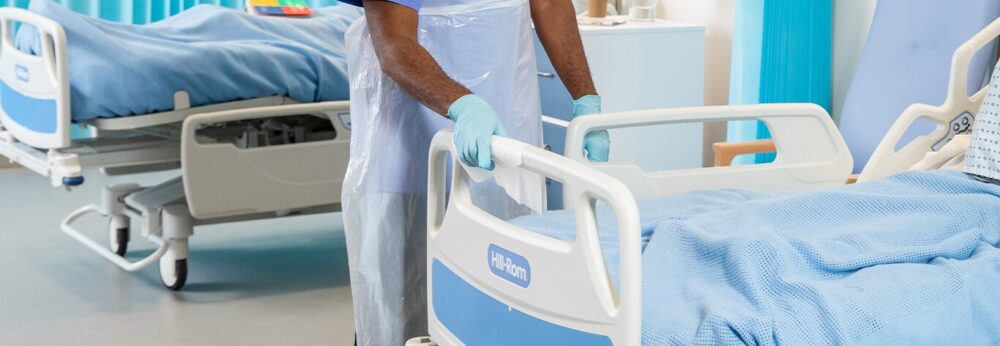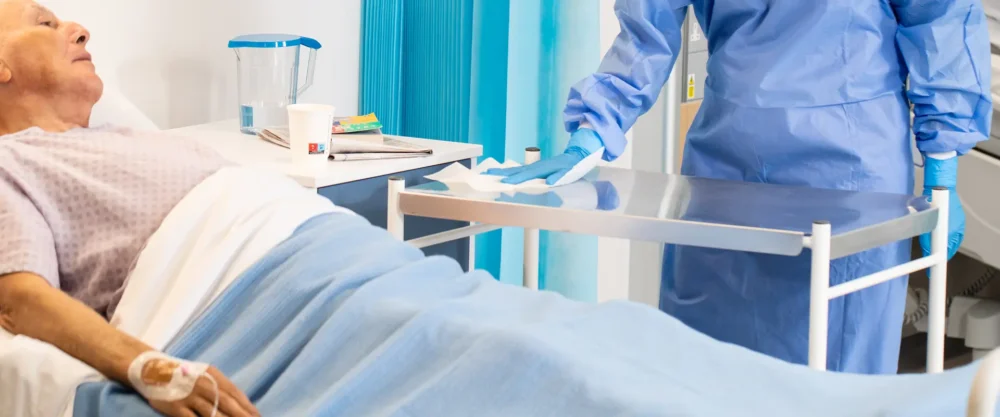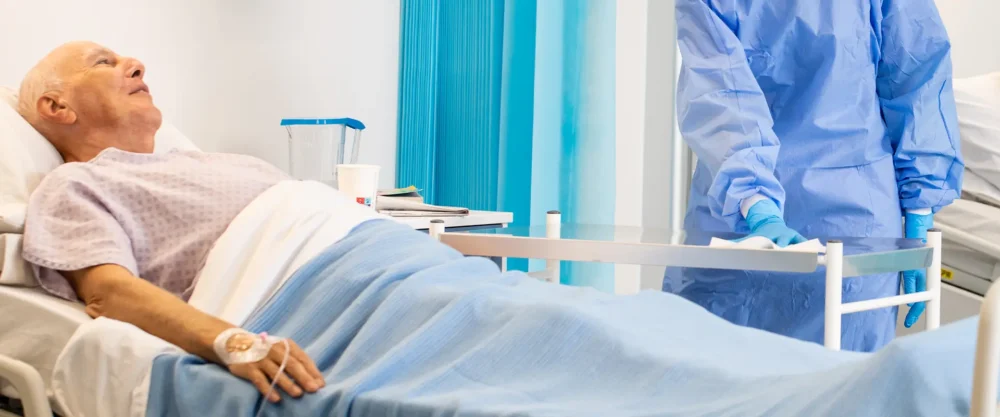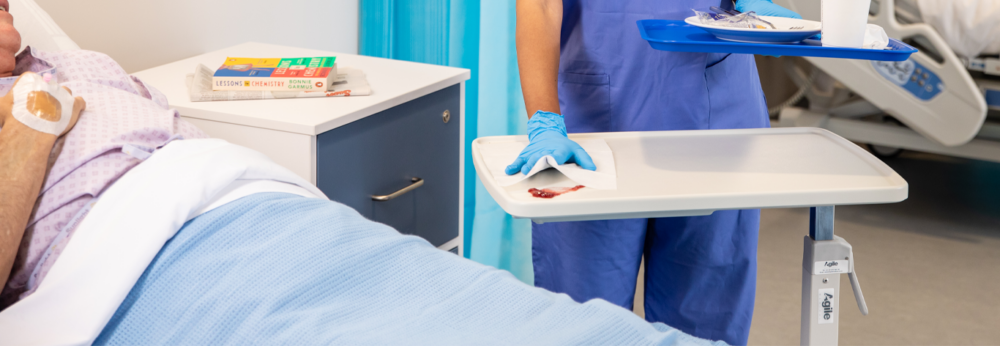Posts Tagged ‘IIPW 2023’
Reflections and learnings from International Infection Prevention Week (IIPW)
International Infection Prevention Week shines a spotlight on the crucial part infection prevention plays in the prevention of healthcare-associated infections every year. This year, with a global theme of ‘Celebrating the Fundamentals of Infection Prevention’, was no different. Getting back to basics like performing hand hygiene, cleaning shared patient equipment, and cleaning high-touch points, to…
Read MoreAccess to patient isolation rooms matters
Infection prevention and control is complex and incorporates a whole range of measures to keep patients, residents, staff and visitors safe when entering a healthcare facility. These measures are inclusive of improved hand hygiene, surveillance, environmental cleaning, antimicrobial stewardship, personal protective equipment (PPE) and isolation of patients that may pose a higher risk. Patient isolation…
Read MoreCleaning equipment between patient use matters
Shared patient equipment can become contaminated and serve as a reservoir for harmful, infection causing pathogens, especially when not cleaned or disinfected between patient use. Inclusive of common equipment such as blood pressure cuffs, wheelchairs, commodes, tympanic thermometers and SpO2 monitors, evidence has shown the link between contaminated shared equipment, transmission of pathogens, HAIs and…
Read MoreMaintaining indoor air quality matters
Air quality is a critical component of infection prevention and control and can influence overall quality of care, as well as patient, resident, staff and visitor health and comfort. In poorly ventilated spaces, infectious pathogens can survive in the air for much longer. Pathogens, particulates and odours linger in poorly ventilated spaces and breathing, talking…
Read MorePatient hand hygiene during key moments matters
While emphasis on effective hand hygiene by healthcare workers to prevent healthcare associated infections is still paramount, it is also vital for patients to have good hand hygiene practices to protect themselves from infection. Healthcare facilities are responsible for ensuring that patients, residents and visitors have access and the opportunity to clean their hands when…
Read MoreSurface decontamination after patient discharge matters
It has been proven that inadequate decontamination of a room through incorrect technique, or use of an inappropriate product can greatly increase the risk posed to the next patient of acquiring the same multi-drug resistant organism after a patient that was colonised or infected with a multi-drug resistant organism. This risk was shown to be…
Read MoreDecontamination of high-touch surfaces matters
High-touch surfaces are surfaces that are frequently touched by patients, residents, healthcare workers and visitors, which means they are more likely to become contaminated and act as a source of transmission of harmful pathogens. High-touch surfaces include doorknobs, bedrails, light switches, remote controls, IV pumps and any other surface that may be frequently touched in the…
Read MoreDecontaminating surfaces after a procedure matters
Contamination of equipment and surfaces can happen at any moment during a procedure. Whilst decontamination of surfaces and equipment before a procedure is proven to remove potentially harmful pathogens, it is just as vital they are decontaminated post- procedure to decrease the risk of transmission and Healthcare Associated Infections (HAIs) occurring. This also mitigates the risk that the next…
Read MoreDecontaminating surfaces and equipment before a procedure matters
The most routine of tasks in a healthcare setting can serve as a potential risk of transmission. The use of any shared equipment increases that risk of transmission, which highlights the crucial role decontaminating surfaces and equipment before use plays in reducing healthcare-associated infections. Healthcare settings serve as a breeding ground for microorganisms and potentially…
Read MoreDecontaminating visibly dirty surfaces matters
In the battle against healthcare-associated infections (HAIs), the importance of infection prevention and control (IPC) has never been clearer. While many aspects contribute to IPC, one key area that often goes unnoticed is the role of visibly dirty surfaces. Recent evidence underscores that effectively decontaminating these surfaces is not just about aesthetics — it significantly…
Read More